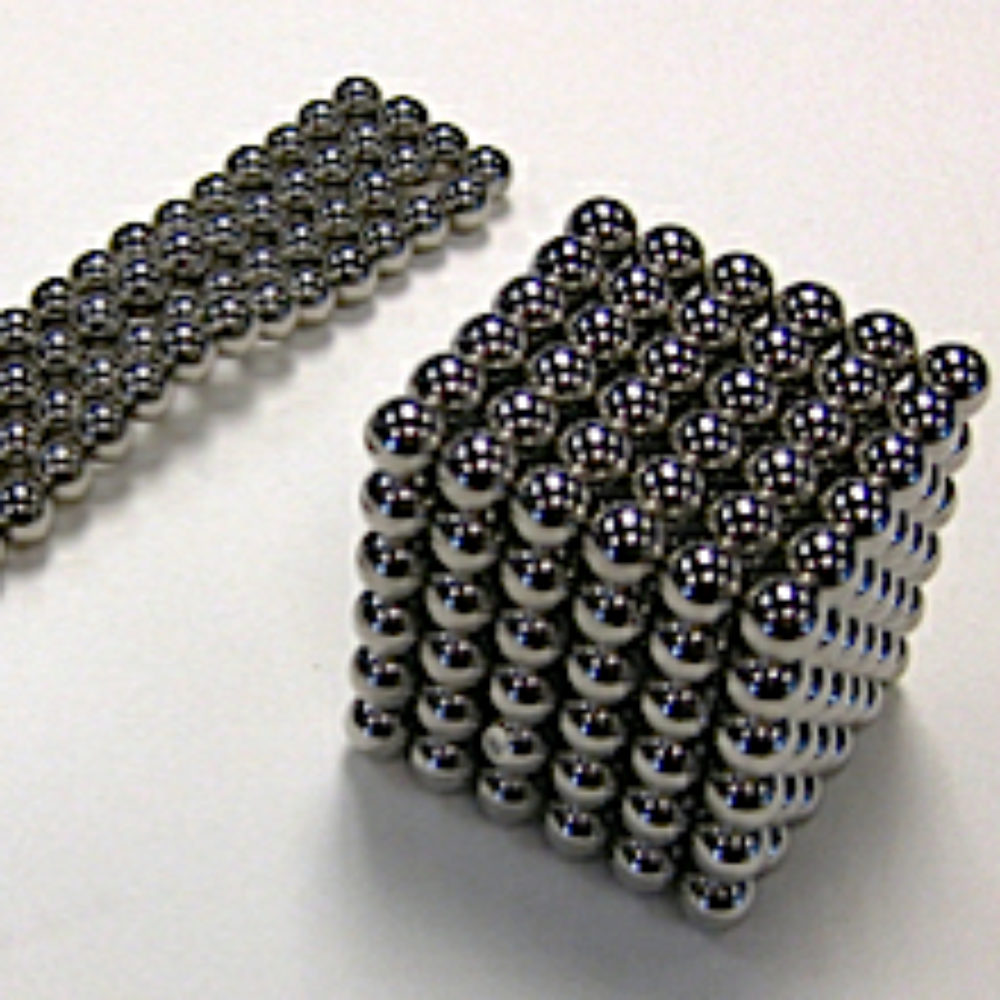Magnetic Ball Warnings Not Effective in Reducing Injury for Children: Report

A new report suggests that the warning labels provided with sets of high-powered, rare earth magnet balls, which are often sold as adult desk toys, are not enough to prevent children from placing them in their mouths or swallowing them, which can lead to serious and potentially life threatening injury.
The report was published late last month by the North American Society for Pediatric Gastroenterology, Hepatology and Nutrition (NASPGHAN) (PDF), highlighting recent concerns about the safety of the products and supporting recent steps taken by federal safety officials to regulate the magnetic ball toys.
The organisation, which represents about 1,700 pediatric gastroenterologists across North America, lauded the U.S. Consumer Product Safety Commission (CPSC) for forcing some makers of magnetic toys to recall their products and developed an educational handout explaining the dangers of swallowing magnetic balls (PDF).

Did You Know?
Millions of Philips CPAP Machines Recalled
Philips DreamStation, CPAP and BiPAP machines sold in recent years may pose a risk of cancer, lung damage and other injuries.
Learn MoreThe high-powered magnets are shaped like BBs or small marbles, and can be formed into various shapes and designs that hold in place. Many teens and young children have suffered devastating injuries after intentionally or accidentally swallowing more than one of the magnetic balls, often after placing them in their mouth to simulate a pierced tongue or attract the magnets across their cheek.
Earlier this year, the U.S. Consumer Product Safety Commission requested that 13 manufacturers of the magnetic ball toys issue voluntary recalls and stop sales. While 11 companies complied, the regulatory agency was forced to file rare administrative complaints against two manufacturers, seeking to issue an involuntary Buckyball recall and Zen Magnets recall.
The administrative complaints are a way for the CPSC to make a mandatory recall of a dangerous product, and this is the first time in 11 years the regulatory agency has had to take such action in an effort to protect consumers.
Most Magnet-Swallowing Incidents Require Surgery
According to NASPGHAN, 480 cases of high-powered magnet ingestion have been recorded over the last 10 years, with 204 of those occurring in the past year. Surgical or endoscopic intervention was required in 80% of those cases.
Roughly half of the cases (51%) were incidents where children ages one to six swallowed the magnets and the rest were swallowed by older children, who intentionally placed the magnets in their mouth before accidentally swallowing them.
The survey was sent to 1,747 NASPGHAN members. Magnet ingestions were reported by 354 pediatric gastroenterologists. But the organization noted that the most severe cases may have been missed by the survey, since often those children would be sent directly to surgery and never seen by a pediatric gastroenterologist.
The numbers are much lower than those previously suggested by the New York Times in August, which estimated that 1,700 magnet ingestion incidents have occurred since January 2009, a number that was based off of emergency room visit data.
The magnetic toy sets are designed for adults, often meant to be office toys, and involve high-powered magnets often sold in sets of 100 or more. The magnets are usually smooth, glossy spheres made of neodymium, iron and boron. They are often referred to as rare-earth magnets.
Ingestions Can Lead to Life-Long Health Problems and Death
If a child swallows more than one, the magnets may be drawn to each other within the digestive tract, which can lead to severe stomach and bowel damage and even death. Damage can include perforations in the intestinal tract, and fistulas. In 16% of cases of surgical intervention, the child has a portion of his or her bowels removed, which can lead to long-term health complications.
The sets have carried warning labels since 2010, noting they are for users aged 14 and up, but the survey’s results indicate that those warnings are not heeded, NASPGHAN officials stated.
“Despite improved warnings, the prevalence of high-powered magnet ingestions is increasing, which tells us that warnings are ineffective at preventing ingestions,” Dr. Robert Noel, the study’s lead author and a pediatric gastroenterologist said in the press release. “The most effective way to prevent ingestions is to ban the sale of high-powered magnet sets.”
Get more articles like this sent directly to your inbox.
"*" indicates required fields





0 Comments